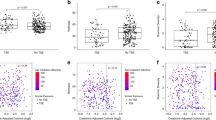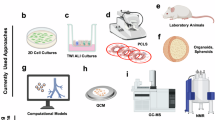Abstract
THE presence of free radicals in tobacco smoke has been reported already. During the course of a programme concerned with free radicals and alkylating agents in tobacco smoke it was observed that the concentration of free radicals in tobacco smoke condensate varied considerably as a function of methods used for collecting and subsequent treatment with solvents. To determine the biological effects of free radicals it became apparent that a method was needed whereby smoke could be directly applied to lung tissue without first collecting and processing the condensate. The method reported here enabled lung tissue to be directly exposed to cigarette smoke in a manner similar to normal smoking and resulted in the observation of distinct changes in the lung tissue as measured by electron spin resonance (ESR).
This is a preview of subscription content, access via your institution
Access options
Subscribe to this journal
Receive 51 print issues and online access
199,00 € per year
only 3,90 € per issue
Buy this article
- Purchase on SpringerLink
- Instant access to full article PDF
Prices may be subject to local taxes which are calculated during checkout
Similar content being viewed by others
Author information
Authors and Affiliations
Rights and permissions
About this article
Cite this article
ROWLANDS, J., CADENA, D. & GROSS, A. Effects of Tobacco Smoke on Lung Tissue as measured by Electron Spin Resonance. Nature 213, 1256–1258 (1967). https://doi.org/10.1038/2131256a0
Issue Date:
DOI: https://doi.org/10.1038/2131256a0



